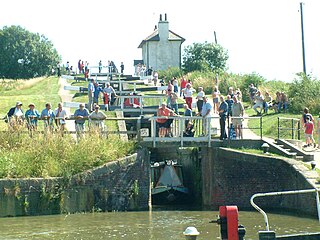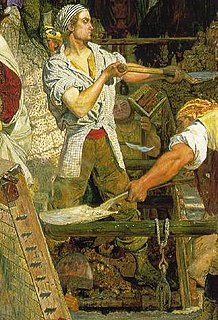 W
WThe canals of the United Kingdom are a major part of the network of inland waterways in the United Kingdom. They have a colourful history, from use for irrigation and transport, through becoming the focus of the Industrial Revolution, to today's role of recreational boating. Despite a period of abandonment, today the canal system in the United Kingdom is again in increasing use, with abandoned and derelict canals being reopened, and the construction of some new routes. Canals in England and Wales are maintained by navigation authorities. The biggest navigation authorities are the Canal & River Trust and the Environment Agency, but other canals are managed by companies, local authorities or charitable trusts.
 W
WBritish Waterways, often shortened to BW, was a statutory corporation wholly owned by the government of the United Kingdom. It served as the navigation authority for the majority of canals and a number of rivers and docks in England, Scotland and Wales.
 W
WA Continuous Cruiser licence is a class of boat licence issued on United Kingdom inland waterways under the control of the Canal and River Trust. The term "Continuous Cruiser" refers specifically to boats and/or owners operating under such licence.
 W
WBritish Waterways, often shortened to BW, was a statutory corporation wholly owned by the government of the United Kingdom. It served as the navigation authority for the majority of canals and a number of rivers and docks in England, Scotland and Wales.
 W
WThe Flower of Gloster is a 1911 book by E. Temple Thurston, an Anglo-Irish poet, playwright and author. Published by Williams and Norgate, it sold well enough to merit a second edition two years later. A third unillustrated edition was published by Chapman and Hall in 1918, after which the book remained out of print for over half a century until being republished by David & Charles in 1968. A year before that, ITV had broadcast a 13-part children's serial of the same name (loosely) based on Thurston's original narrative.
 W
WA gongoozler is a person who enjoys watching activity on the canals of the United Kingdom. The term is also used more generally to describe those who harbour an interest in canals and canal life, but do not actively participate.
 W
WThe canal network of the United Kingdom played a vital role in the Industrial Revolution. The canals permitted the creation of wealth, by industry, that led to the British Empire in the Victorian Era. The UK was the first country to develop a nationwide canal network, which expanded to nearly 4,000 miles in length. The canals allowed raw materials to be transported to a place of manufacture, and finished goods to be transported to consumers, more quickly and cheaply than via a land based route.
 W
WThis List of canal junctions in the United Kingdom is an incomplete list of canal junctions in the United Kingdom that have articles in Wikipedia, in alphabetical order.
 W
WCanals of the United Kingdom; see also Canals of the United Kingdom.
 W
WThe Mikron Theatre Company is an English touring theatre company, founded in 1972, which is notable for its tours by canal boat during the summer months, and by road in the spring and autumn. The company believes itself to be the only theatre company in the world which tours by narrowboat.
 W
WNarrow Boat is a book about life on the English canals written by L. T. C. Rolt. Originally published in 1944 by Eyre & Spottiswoode, it has continuously been in print since.
 W
WA narrowboat is a particular type of canal boat, built to fit the narrow locks of the United Kingdom. The UK's canal system provided a nationwide transport network during the Industrial Revolution, but with the advent of the railways, commercial canal traffic gradually diminished and the last regular long-distance traffic disappeared in 1970. However, some commercial traffic continued into the 1980s and beyond.
 W
WNavvy, a shorter form of navigator (UK) or navigational engineer (US), is particularly applied to describe the manual labourers working on major civil engineering projects and occasionally to refer to mechanical shovels and earth moving machinery. The term was coined in the late 18th century in Great Britain when numerous canals were being built, which were also sometimes known as "navigations", or "eternal navigations", intended to last forever.
 W
WBritish Waterways, often shortened to BW, was a statutory corporation wholly owned by the government of the United Kingdom. It served as the navigation authority for the majority of canals and a number of rivers and docks in England, Scotland and Wales.
 W
WA tub boat was a type of unpowered cargo boat used on a number of the early English and German canals. The English boats were typically 6 m (19.7 ft) long and 2 m (6.6 ft) wide and generally carried 3 long tons to 5 long tons of cargo, though some extra deep ones could carry up to 8 long tons. They are also called compartment boats or container boats.
 W
WWaterway restoration is the activity of restoring a canal or river, including special features such as warehouse buildings, locks, boat lifts, and boats. In the United Kingdom, Canada and the United States, the focus of waterway restoration is on improving navigability, while in Australia the term may also include improvements to water quality. (For water quality improvement activity in the US and UK see stream restoration.)
 W
WA widebeam is a canal boat built in the style of a British narrowboat but with a beam of 2.16 metres or greater. Widebeams are found on the UK waterways, a canal and river system that is managed by the Canal and River Trust (CRT)